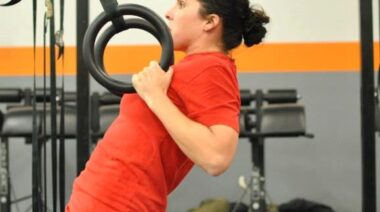Battling ropes. You’ve probably seen them, if not in your local gym then on TV shows like The Biggest Loser. Someone picks up the ends of two long ropes, with one rope in each hand, and quickly snaps them up and down, creating waves down the length of each rope. Said person gets exhausted, lies down, and maybe sees Jesus.
But is this really an effective exercise? Yes, says a forthcoming study from the Journal of Strength and Conditioning Research. Eleven participants volunteered to thrash themselves in a ten-minute battling rope workout. Each person performed the exercise for fifteen seconds, then rested for 45 seconds, and repeated the sequence for a total of ten rounds. Researchers took all kinds of metabolic measurements before and after the exercise in order to determine its effect.
The results were significant. Peak heart rates reached almost 180 beats per minute. Peak blood lactate reached almost 12mmol per liter. That’s similar to other high intensity exercises like sprinting or biking. These parameters would classify battle ropes as a “vigorous intensity” exercise by the American College of Sports Medicine standards.
So while we don’t know much about battling ropes, we do know that it can be a pretty intense exercise. The very nature of battling ropes could make them a useful tool in a coach’s toolbox. The exercise is self scaled, making it an ideal option for new athletes. Beginners don’t fully know their capabilities and limitations, and finding the right loads for them can take time and patience. Coaches have limited time to spend with each athlete, so this makes battle ropes an option when a conditioning circuit is needed with limited time to practice loaded movements. The intensity of the exercise is also self scaled. Each athlete will push a little bit differently during his fifteen-second work interval. This means athletes are less likely to push beyond their capabilities, although supervision is still necessary.
So what do you think? Are battling ropes a valuable exercise, or is it only popular because it looks cool and hardcore?
References
1. Charles Fountaine and Brad Schmidt. Metabolic Cost of Rope Training. Journal of Strength & Conditioning Research (forthcoming): POST ACCEPTANCE, 26 July 2013. doi: 10.1519/JSC.0b013e3182a35da8.
Photo courtesy of Shutterstock.






